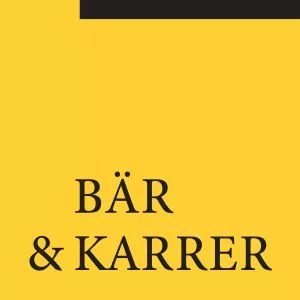1 Overview
1.1 What are the most common types of private equity transactions in your jurisdiction? What is the current state of the market for these transactions?
All of the standard transaction strategies to acquire portfolio companies are commonly used in Switzerland. We assume that regular leveraged buyouts have accounted for the majority of the transactions in recent years. 2021 was a record deal-making year for private equity (according to the KPMG M&A Sector Reports for Switzerland in 2021).
1.2 What are the most significant factors currently encouraging or inhibiting private equity transactions in your jurisdiction?
Low interest rates for transaction financing, as well as favourable borrowing conditions, still generate an incentive for private equity activity. However, the records of 2021 will likely not be reached due to the uncertainty relating to the conflict in Ukraine.
1.3 Have you observed any long-term effects for private equity in your jurisdiction as a result of the COVID-19 pandemic? If there has been government intervention in the economy, how has that influenced private equity activity?
As also experienced in 2021, the COVID-19 pandemic has not slowed private equity deal-making down in the long term. Companies receiving government funding due to the pandemic must comply with certain restrictions, e.g. they may not disburse dividends for a certain period. Such restrictions (to upstreaming cash) have to be taken into account when structuring private equity transactions.
1.4 Are you seeing any types of investors other than traditional private equity firms executing private equity-style transactions in your jurisdiction? If so, please explain which investors, and briefly identify any significant points of difference between the deal terms offered, or approach taken, by this type of investor and that of traditional private equity firms.
A number of family offices are playing an active role in Swiss private equity-style transactions, both in co-investments with private equity funds and as sole investors. In particular, in the latter case, their approach can differ from traditional private equity firms, e.g. in terms of structuring in connection with tax considerations.
2 Structuring Matters
2.1 What are the most common acquisition structures adopted for private equity transactions in your jurisdiction?
Usually, private equity funds investing in Swiss portfolio companies set up a NewCo/AcquiCo in Switzerland as an acquisition vehicle. The NewCo is held either directly or via Luxembourg, the Netherlands or a similar structure. We have also seen AcquiCos incorporated outside of Switzerland.
Management usually invests directly in the AcquiCo rather than via a management participation company. Often, a single shareholders' agreement (SHA) is concluded between the financial investor(s) and management, which governs all aspects of the investment (governance, exit procedures, share transfers, good/bad leaver provisions, etc.). In other cases, a main SHA is concluded between the financial sponsors and a separate, smaller SHA with management.
2.2 What are the main drivers for these acquisition structures?
The acquisition structure is mainly tax-driven (tax-efficient repatriation of dividends/application of double taxation treaties, tax-exempt exit). Directly investing in the AcquiCo may allow Swiss-domiciled managers to realise a tax-free capital gain on their investment when the AcquiCo is sold on exit.
2.3 How is the equity commonly structured in private equity transactions in your jurisdiction (including institutional, management and carried interests)?
A Swiss NewCo often has only one class (or a maximum of two classes) of shares. Preferential rights, exit waterfall, etc. are implemented on a contractual level in the SHA. NewCos incorporated abroad often have several classes of shares.
2.4 If a private equity investor is taking a minority position, are there different structuring considerations?
Structuring is, in principle, not fundamentally different from majority investments. Pre-existing structures are often maintained to a certain extent. However, on a contractual level, increased protection is sought (veto rights, right to trigger an exit, etc.).
2.5 In relation to management equity, what is the typical range of equity allocated to the management, and what are the typical vesting and compulsory acquisition provisions?
Management equity amounts and terms depend very much on the individual deal. Typically, the management stake ranges between 3–10%. In most cases, standard drag-along and tag-along provisions and good/bad leaver call options for the benefit of the financial sponsor will apply. Put options for the benefit of management are less prevalent.
2.6 For what reasons is a management equity holder usually treated as a good leaver or a bad leaver in your jurisdiction?
Good leaver cases typically encompass: (i) termination of employment by the company absent cause set by the manager; (ii) termination of employment by the manager with cause set by the company; and (iii) death, incapability, reaching of retirement age or mutual termination.
Bad leaver cases on the other hand usually include (i) termination of employment by the company with cause set by the manager, (ii) termination of employment by the manager absent cause set by the company, and (iii) material breach by the manager of the SHA or criminal acts.
3 Governance Matters
3.1 What are the typical governance arrangements for private equity portfolio companies? Are such arrangements required to be made publicly available in your jurisdiction?
The predominant model for acquisitions of portfolio companies in Switzerland is the stock corporation (Aktiengesellschaft). Sometimes, limited liability companies (LLCs, GmbH) are used, which have the advantage of being treated as transparent for US tax purposes.
The stock corporation is governed by a board of directors that has a supervisory function and resolves on strategic and important issues (appointment of senior management, etc.). A director is elected ad personam; proxies (e.g. in the case of absence at meetings) are not possible.
Day-to-day management is normally delegated to management, based on organisational regulations. They often contain a competence matrix defining the competences of each management level and the decisions that need approval by the board or even shareholders
Such division of competence is – together with board composition, quorum requirements, etc. – also reflected on a contractual level in the SHA.
Neither the organisational regulations nor the SHA are required to be made publicly available in Switzerland; only the articles of association.
Our comments in question 3.1 regarding stock corporations apply largely also to LLCs.
In June 2020, the Swiss federal parliament approved a general corporate law reform. The aim of the reform is to modernise corporate governance by strengthening (minority) shareholder rights and, for listed companies, promoting gender equality in boards of directors and in senior management. Furthermore, the new law will facilitate company formation, makes capital rules more flexible (e.g. allows for capital to be denominated in a foreign currency) and amends the rules on corporate restructurings. The amendment will enter into force on 1 January 2023.
3.2 Do private equity investors and/or their director nominees typically enjoy veto rights over major corporate actions (such as acquisitions and disposals, business plans, related party transactions, etc.)? If a private equity investor takes a minority position, what veto rights would they typically enjoy?
If a private equity investor holds a minority of the voting rights, its veto rights usually depend on the stake held: while a small investor (up to 20%) normally enjoys only fundamental veto rights aimed at the protection of its financial interest (dissolution, pro rata right to capital increases, no fundamental change in business, maximum leverage, etc.), investors holding a more significant minority stake (20–49%) usually also have veto/influence rights regarding important business decisions and the composition of senior management. The exit rights for private equity investors holding a minority position are usually heavily negotiated.
3.3 Are there any limitations on the effectiveness of veto arrangements: (i) at the shareholder level; and (ii) at the director nominee level? If so, how are these typically addressed?
At shareholder level, veto rights may be created by introducing high quorums for certain shareholders' decisions in the articles of association and the SHA. Such veto rights are generally regarded as permissive, provided the arrangement does not lead to a blockade of decision-taking in the company per se.
At board level, individual veto rights of certain board members cannot be implemented based on the articles of association or other corporate documents. However, such individual veto rights are regularly incorporated in the SHA; i.e. the parties agree that the board shall not take certain decisions without the affirmative vote of certain nominees. A board decision taken in contradiction to such contractual arrangement would still be valid but may trigger consequences under the SHA. Furthermore, directors are bound by a duty of care and loyalty vis-à-vis the company. If abiding by instructions given by another person based on contractual provisions leads to a breach of such duties, the board member may not follow such instructions and will likely not be in breach of the SHA (at least if the latter is governed by Swiss law).
3.4 Are there any duties owed by a private equity investor to minority shareholders such as management shareholders (or vice versa)? If so, how are these typically addressed?
Purely from its position as a shareholder, in principle, a private equity investor does not have such duties; shareholders of a Swiss stock corporation do not have any duty of loyalty.
However, directors, officers and management have a duty of care and loyalty towards the company and, to a certain extent, also to the minority shareholders. Under special, limited circumstances, a private equity investor or an individual acting for it may be regarded as de facto/shadow director of the company and, consequently, also be bound by such duties. The claim that a shareholder or one of its representatives is a shadow director might be successfully made if such person has de facto acted as an officer of the company, e.g. by directly taking decisions that would actually be within the competence of the board, etc.
To view the full article, click here
The content of this article is intended to provide a general guide to the subject matter. Specialist advice should be sought about your specific circumstances.


